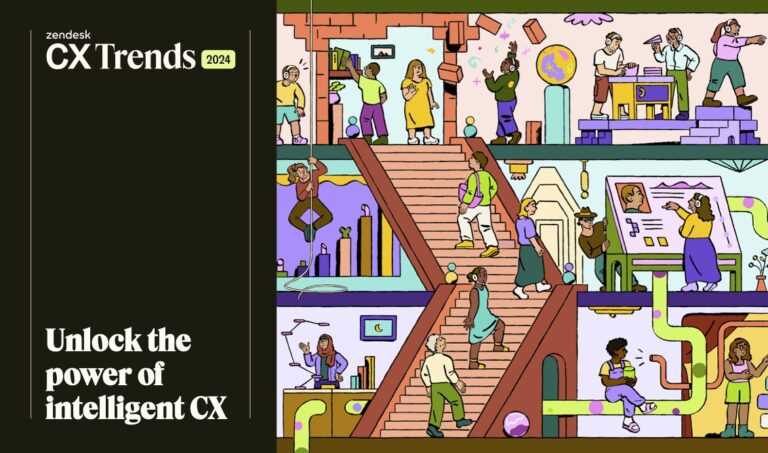In the fast-paced world of customer service, effective communication is the linchpin that holds businesses together. Centralising customer interactions across various channels has emerged as a crucial strategy to ensure customer satisfaction and loyalty. In this article, we will delve into the significance of centralisation, techniques to unify communication platforms, and the utilisation of a versatile customer service platform that supports omni-channel capabilities. Additionally, we will focus on the distinctions between chat and messaging and explore the concept of channel switching.
Significance of Centralising Customer Interactions:
Centralising customer interactions is about consolidating all communication channels into a single, cohesive platform. This approach offers several benefits:
Enhanced Customer Experience: By centralising customer interactions, businesses can provide a consistent and seamless experience, regardless of the channel customers use. This leads to higher customer satisfaction and loyalty.
Efficient Tracking: Centralisation allows for real-time monitoring and tracking of customer enquiries, enabling businesses to respond swiftly and efficiently.
Timely Responses: With a centralised system, businesses can ensure that customer enquiries are promptly addressed, improving response times and reducing the risk of customer frustration.
Attaching Service Level Agreements (SLAs): Centralisation allows organisations to attach SLAs to customer enquiries. This serves two crucial purposes:
a. Measuring Adherence to Expected Service Levels: SLAs provide a benchmark against which the organisation can measure its performance. It allows for tracking whether response times, resolution times, and other service metrics align with the promised service levels.
b. Prioritising Enquiries Based on Impact, Urgency, and VIP Customers: SLAs help in categorising customer enquiries according to their impact and urgency. High-priority enquiries, especially those from VIP customers, can be fast-tracked to ensure they receive immediate attention, while standard inquiries follow their respective SLAs.
Creating Departmental and Executive Dashboards: To further enhance the management of SLAs, organisations can create departmental and executive dashboards. These dashboards provide a visual representation of SLA adherence for each channel. They enable department heads and executives to monitor the performance of their teams and identify areas where improvements can be made. By having a clear view of SLA compliance, businesses can take proactive steps to address bottlenecks, allocate resources effectively, and continually enhance the customer service experience.
By attaching SLAs to customer interactions and implementing departmental and executive dashboards, businesses can not only ensure adherence to service standards but also drive a culture of continuous improvement, resulting in even higher levels of customer satisfaction and loyalty.
Significance of Centralising Customer Interactions:
Centralising customer interactions is about consolidating all communication channels into a single, cohesive platform. This approach offers several benefits:
Enhanced Customer Experience: By centralising customer interactions, businesses can provide a consistent and seamless experience, regardless of the channel customers use. This leads to higher customer satisfaction and loyalty.
Efficient Tracking: Centralisation allows for real-time monitoring and tracking of customer enquiries, enabling businesses to respond swiftly and efficiently.
Timely Responses: With a centralised system, businesses can ensure that customer enquiries are promptly addressed, improving response times and reducing the risk of customer frustration.
Attaching Service Level Agreements (SLAs): Centralisation allows organisations to attach SLAs to customer enquiries. This serves two crucial purposes:
a. Measuring Adherence to Expected Service Levels: SLAs provide a benchmark against which the organisation can measure its performance. It allows for tracking whether response times, resolution times, and other service metrics align with the promised service levels.
b. Prioritising Enquiries Based on Impact, Urgency, and VIP Customers: SLAs help in categorising customer enquiries according to their impact and urgency. High-priority enquiries, especially those from VIP customers, can be fast-tracked to ensure they receive immediate attention, while standard inquiries follow their respective SLAs.
Creating Departmental and Executive Dashboards: To further enhance the management of SLAs, organisations can create departmental and executive dashboards. These dashboards provide a visual representation of SLA adherence for each channel. They enable department heads and executives to monitor the performance of their teams and identify areas where improvements can be made. By having a clear view of SLA compliance, businesses can take proactive steps to address bottlenecks, allocate resources effectively, and continually enhance the customer service experience.
By attaching SLAs to customer interactions and implementing departmental and executive dashboards, businesses can not only ensure adherence to service standards but also drive a culture of continuous improvement, resulting in even higher levels of customer satisfaction and loyalty.
Techniques for Unifying Communication Platforms:
To centralise customer interactions effectively, consider employing the following techniques:
Implement an Omni-Channel Customer Service Platform: Choose a customer service platform that supports omni-channel capabilities. Such platforms integrate telephony, messaging, self-service knowledge bases, social media, and email, providing a holistic view of customer interactions.
Utilise Chat and Messaging with Self-Service: Chat and messaging channels are invaluable for delivering immediate service, particularly for time-critical inquiries where customers require real-time assistance. However, these channels can be resource-intensive, demanding significant agent effort and increasing operational costs.
To strike a balance between exceptional customer support and cost-efficiency, organisations are increasingly combining chat and messaging with a robust self-service strategy. By offering customers the tools and resources to find answers to common and repeatable questions on their own, businesses empower users to resolve issues without agent intervention. This not only reduces the workload on support agents but also empowers customers with the independence to access information whenever they need it, enhancing the overall customer experience and driving operational efficiency.
Channel Switching:
Channel switching involves transitioning a conversation from one channel to another. This can be due to various reasons, such as the complexity of the enquiry or privacy concerns. Here are some examples:
Moving Social Media Messages to Direct Message: When a customer initiates a conversation on a public social media post but requires more in-depth assistance or has sensitive information that needs to be discussed, it’s advisable to move the conversation to a private direct message. This ensures privacy and allows for a more detailed exchange.
Transitioning from Messaging to Email: If a customer enquiry becomes too complex for messaging or requires sharing lengthy documentation, transitioning to email is a practical choice. Email provides a structured format for in-depth discussions and file sharing.
In conclusion, centralising customer interactions across various channels is vital for modern customer service. Employing techniques like utilising an omni-channel customer service platform, understanding the nuances between chat and messaging, and incorporating channel switching options ensures efficient tracking and timely responses. By prioritising these strategies, businesses can deliver exceptional customer service experiences that foster long-term relationships with their clientele.




